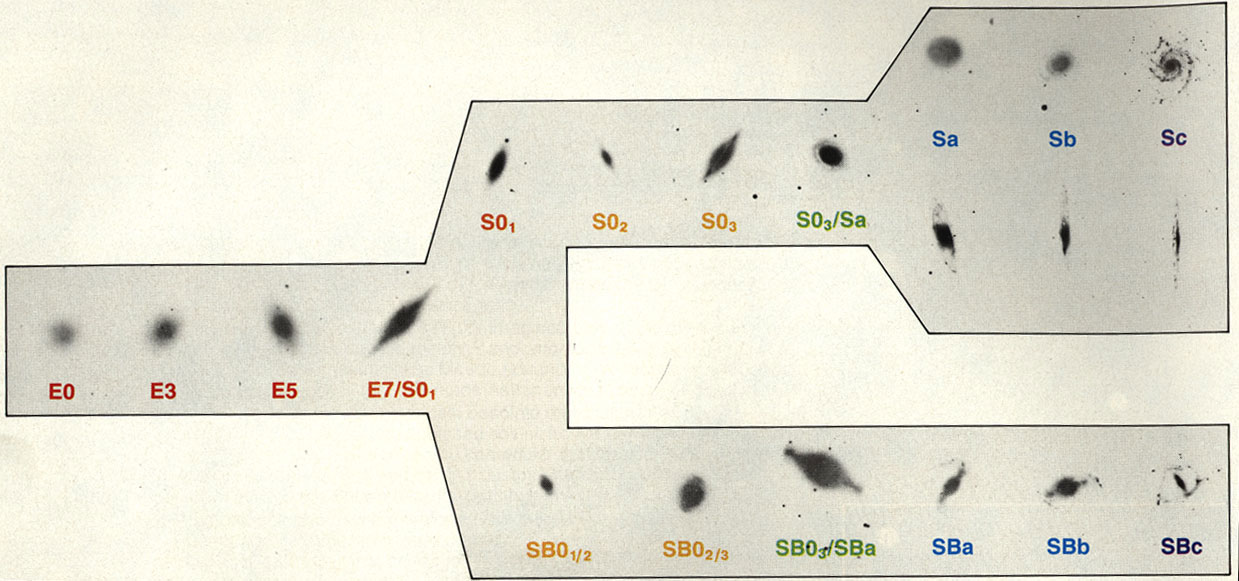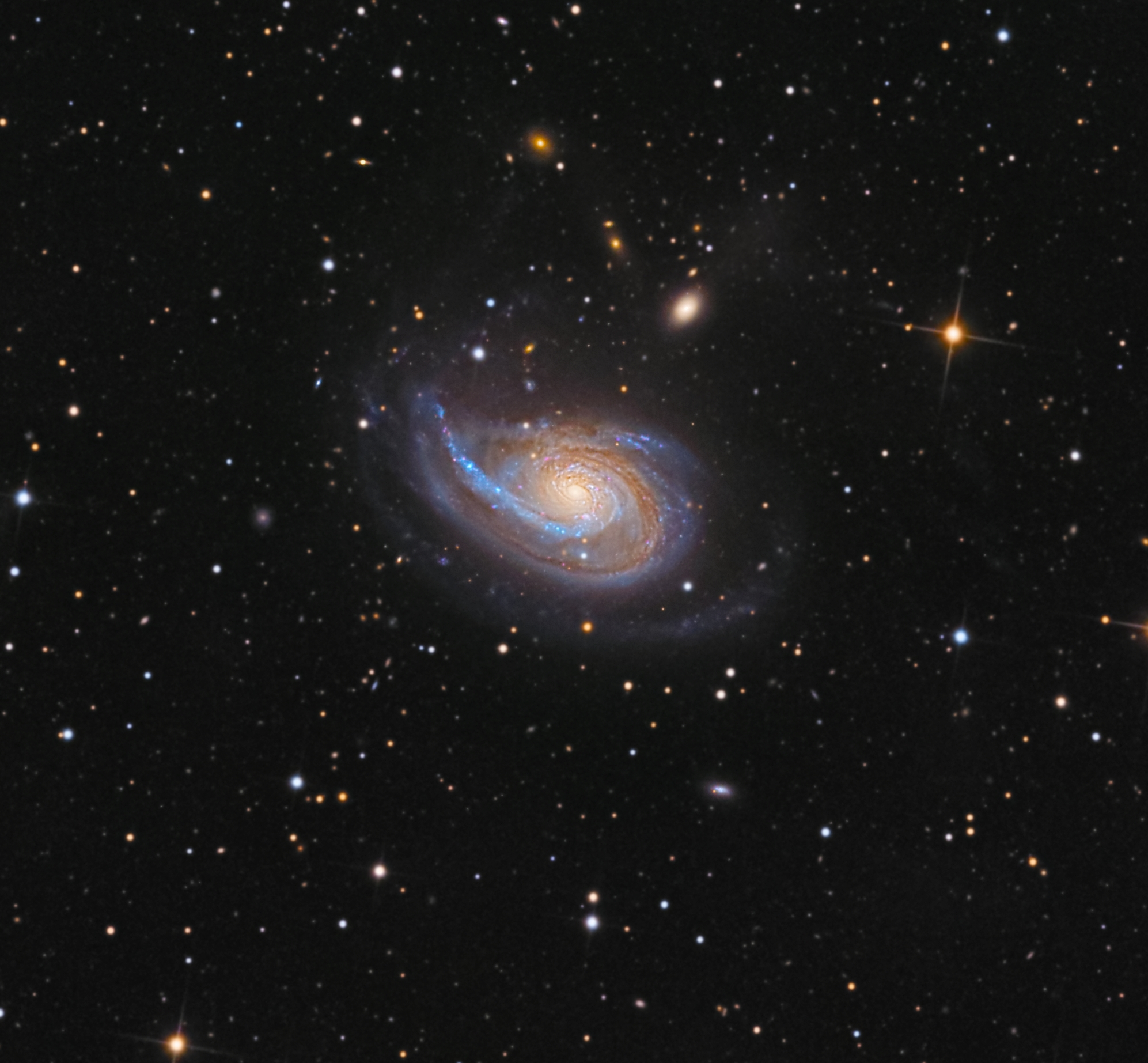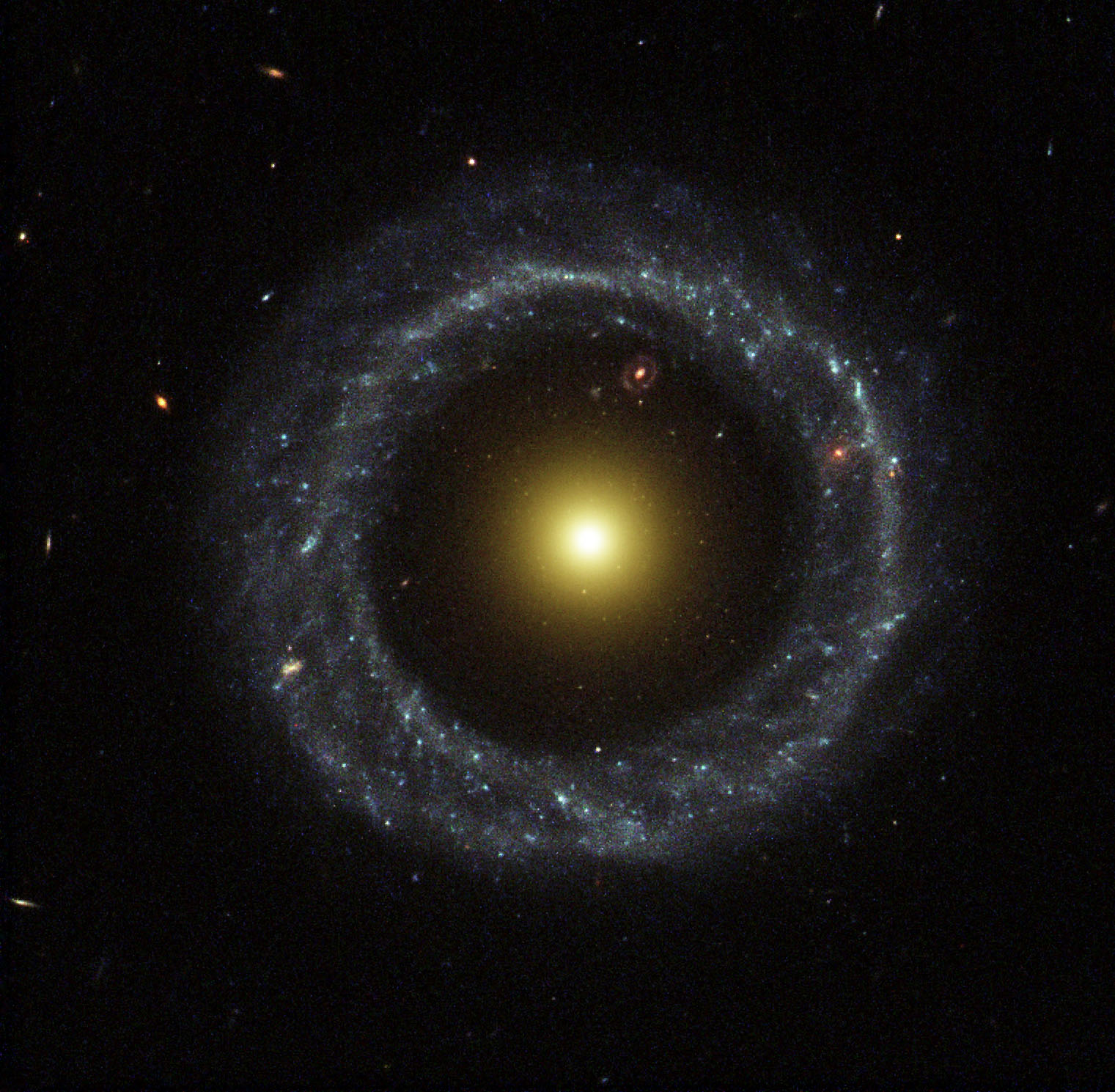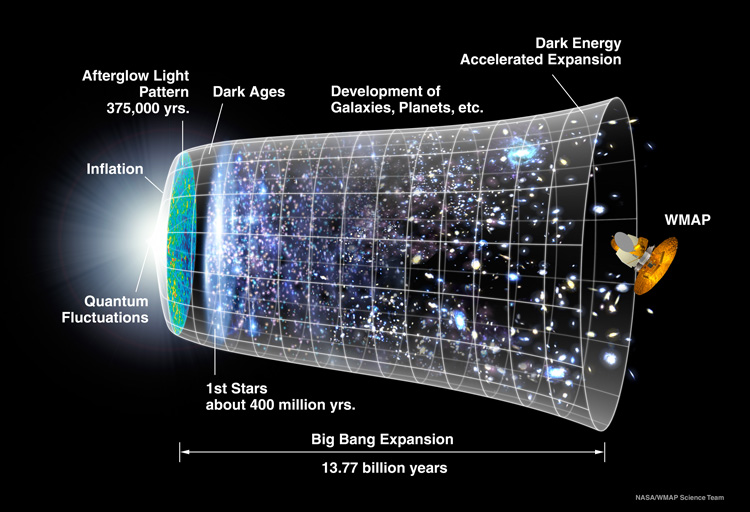Galaxies are very fascinating. They are just like stars, but different classes. Except that they are bodies that are full of star and in the center is a supermassive black hole. Galaxies were formed due to the big bang. This will tell you about many important facts about galaxies.

[Image source: nasa.gov]
There are four different types of galaxies. They are called elliptical galaxies, spiral galaxies, barred spiral galaxies and irregular galaxies. Each of them have a classification of their own except for irregular galaxies. One type of irregular galaxies is called the large magellanic cloud ( LMC ) and small magellanic cloud (SMC). One famous spiral galaxy is the Andromeda Galaxy. Our Milky Way might be a barred spiral since we haven't seen it yet. One of the most famous elliptical galaxy is IC1101 which is the largest galaxy ever discovered. The oldest galaxy we have ever discovered is called GN-Z11 and it is about 13.4 billion years old which is just 400 million years younger than the universe!
It is also the farthest galaxy at 32 billion light years away, but it is supposed to be 13.4 billion light years away since the universe is expanding. The most young galaxy called I Zwicky 18 which is about 500 million years young. Our Earth is older than this galaxy. For the barred spiral is the S0, SBa, SBb,and SBc. For the spiral is S0, Sa, Sb, and Sc. For elliptical it is E0, E3, E5 and E7.

[Image source: nasa.gov]

[Image source: nasa.gov]
Barred Spiral is a type of galaxy which has a huge line from the ring to the other ring which looks like a bar. Our Milky Way is a barred spiral. A barred spiral looks like a spiral galaxy. Most barred spiral galaxies are active galaxies. An active galaxy is where a galaxy has an active galactic nuclei (AGN). An active galactic nuclei is where the the center emits jet streams of electromagnetic radiation.
Spiral galaxies are galaxies which have a round circular core with arms coming out of it. The Andromeda Galaxy is a spiral galaxy. The Spiral galaxies have a round halo of dark matter. Dark matter is a type of matter, that may be real and is a gravity which can hold galaxies together. Without dark matter everything will fall apart. In the core older type of star rotate around the supermassive black hole in the middle of the galaxy.
Elliptical galaxies are one of the largest galaxies in the whole universe. These type of galaxies have less stars while other galaxies have more stars. The largest galaxies are giant ellipticals. Many elliptical galaxies are believed to form due to the interaction of galaxies resulting into a collision and merger. They can grow to an enormous size ( compared to spiral galaxies ) and giant elliptical galaxies are often found near the core of large galaxy clusters.
Starbursts galaxies are the result of a galactic collision that can result in the formation of elliptical galaxy. Elliptical galaxies are yellow whitish type of galaxy. Elliptical galaxy can be formed by two galaxies colliding into each other.
Irregular galaxies are galaxies which are in irregular shape. These type of galaxy have about few billion stars. They are also very very small in diameter. The closest irregular galaxy is the large magellanic cloud which has the tarantula nebula. Inside that nebula has the most massive star which we know as R136a1. Irregular galaxies may contain abundant amount of gas and dust. This is not necessarily true for dwarf irregular galaxies.
Irr-1 is a type of irregular galaxy where it is not part of Hubble Space Telescope classification for galaxies.
Irr-II is a type of irregular galaxy where it may have come out of other galaxy such as the magellanic cloud which may have come out from the Milky Way galaxy.
Peculiar galaxies have very unusual properties to interact other galaxies.

[Image source: nasa.gov]
Is a type of galaxy which looks like a spiral and elliptical galaxy combination.

[Image source: nasa.gov]
A ring galaxy is a type of galaxy which all the stars are shaped like a ring while the core is inside the middle.

[Image source: nasa.gov]
This is a type of galaxy which is not very dense and it lacks in luminosity and visible stars.

[CREDIT: B. SCHOENING, V. HARVEY/REU PROGRAM/NOAO/AURA/NSF, P. VAN DOKKUM/HUBBLE SPACE TELESCOPE.]
A dwarf galaxy is a type of galaxy which can be classified as the elliptical, spiral or irregular galaxies. These are the most common type of galaxies in the whole universe. Mostly all of the satellites of the Milky Way are dwarf galaxies. The Milky Way is part of a group called the Local Group which includes all of the closest galaxies. The largest galaxy in the Local Group is the Andromeda Galaxy. The Milky Way is on a collision course with the Andromeda Galaxy.

[Image source: nasa.gov]
After the Big Bang, when the universe was very young, atoms started to form hydrogen and helium atoms. It didn't create stars yet so the universe was dark, but it was still kind of hot. This was called the dark ages. Matter starts to condense with the dark matter creating stars which started to create stars and galaxies as we know today. Today people are trying to find older galaxies that were in the young universe. The oldest galaxy ever discovered is called GN-Z11. It is also the farthest ever discovered galaxy.
It is 13.4 billion years old and it is 32 billion light years away from us because the universe is expanding. The first galaxies started from Globular Clusters. Globular Cluster are huge star clusters with a black hole in the middle of it. When these clusters are formed more stars came causing them to create protogalaxies. Protogalaxies are the beginning stages of galaxies. Once the stars blow up into supernova then it creates a nubula, which creates stars.
Galaxies started to collide making huge galaxies, and dwarf galaxies kept on increasing. The Milky Way has been colliding with small dwarf galaxies, but has never collide with huge galaxies such as the Andromeda Galaxy because both are coming at the rate of 130 km/s. It will collide in about 3.75 billion years to 4 billion years.

[Image source: nasa.gov]
Galactic collisions are known also as interacting galaxies and colliding galaxies. Galactic collisions are very common in the universe. Galactic collisions are collisions are where there is an interaction with the stars. It makes gas and dust which can make formation of stars, and which can make them collide. Also the galaxies gravitational field can disturb a different galaxy gravitational field, which then they collide into each other. There are different type of galactic collisions.
This is where the satellite goes into the galaxy where it is orbiting in. One example is the Sagittarius dwarf elliptical dwarf galaxy which is going to the Milky Way.
This is where two large galaxies called Andromeda Galaxy and the Milky Way collide with each other. This is very common in the galaxies evolution. Once they collide they will have a different shape. A galaxy called the Cartwheel Galaxy was created due to collision of two small galaxies.
These types of galactic collision is when the large galaxy eats its smaller companion. This is happening between the Milky Way and Magellanic Clouds. Streams of hydrogen is going from the Magellanic Clouds to the Milky Way. These type of galactic collisions is happening with irregular galaxies.
Galaxy Harassment where a bright galaxy takes away stars from a low luminosity galaxy. When this happens the bright galaxy will produce a starburst. A starburst galaxy is where the star formation increases.
If the Milky Way collides with the Andromeda Galaxy, there might be a triple galactic collision where the Triangulum or M33 (Messier 33) might come through the galactic collision.

[Image source: nasa.gov]
This is where both might collide and may become an elliptical galaxy or a lenticular galaxy.

[Image source: nasa.gov]
In the center of all galaxies there is a black hole. The mass of our black hole is about 4 million solar masses. The largest black hole ever discovered is in the galaxy is TON 618. It is also the most massive black hole at 66 billion solar masses! This black hole is so massive that it is more massive than all its stars in its galaxy.

[Image source: nasa.gov]
The smallest supermassive black hole ever discovered is in the galaxy RGG 118. It is also the lightest supermassive black hole ever discovered at just 50,000 solar masses.
The types of galaxies are amazing and unique in their own ways. Irregular galaxies is amazing and unique because of its shape. No other type of galaxy has an irregular shape like irregular galaxies. Barred Spiral galaxies are amazing and unique because it is like another version of a spiral. It has a core which is shaped like a bar. Spirals are amazing and unique because they have a very unique shape. They have arms sticking out like a spiral. Elliptical galaxies are amazing and unique because of their size. Their size is so huge that the largest ever discovered galaxy IC 1101 is an elliptical galaxy. The role of galaxies to keep stars together is an influence called dark matter. Which one is your favorite type of galaxy?